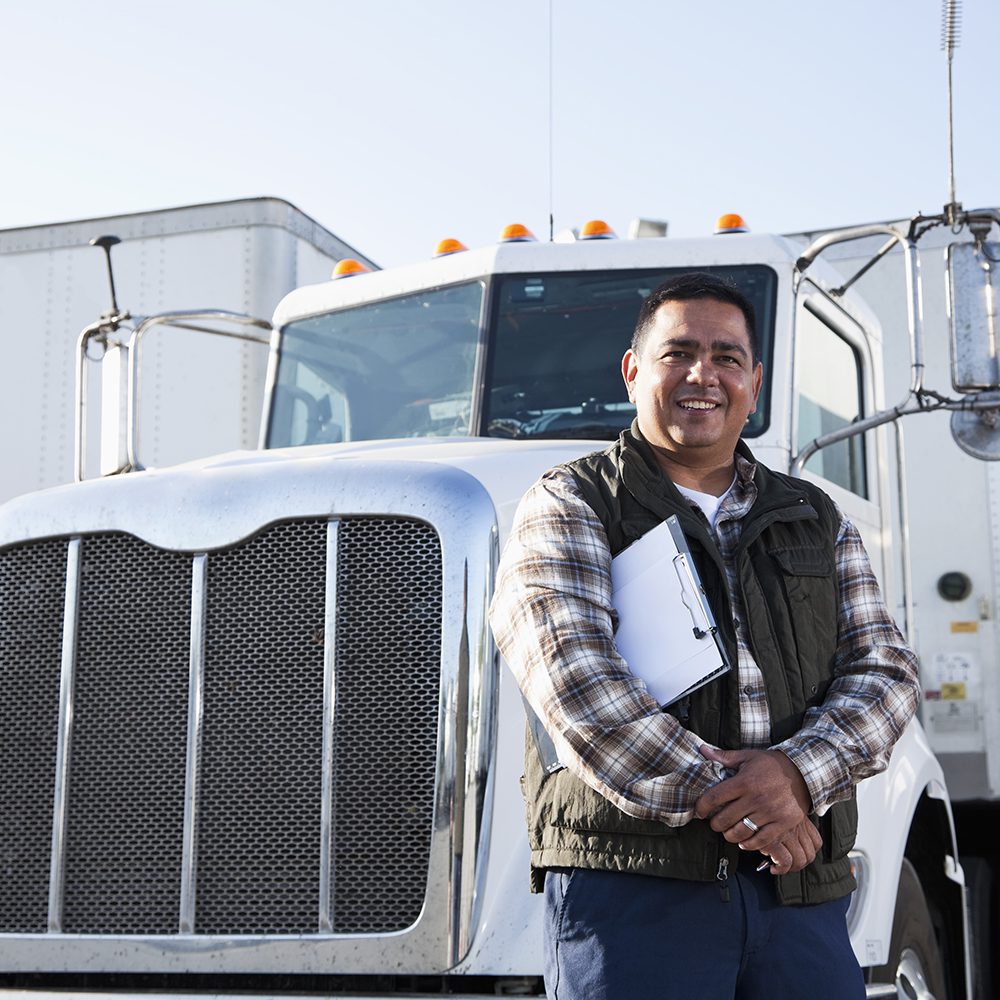Simplifying Fleet Toll Management: The Bestpass Advantage
Toll management is a critical yet often challenging aspect of operating a fleet in the United States, with fleets frequently navigating a complex network of toll roads, bridges, and tunnels. Bestpass by Fleetworthy has emerged as the nation’s leading toll management solution, trusted by over 30,000 customers and managing more than 1.9 million vehicles. With its robust platform, Bestpass simplifies toll management for fleet managers and owner-operators alike, offering nationwide toll coverage and seamless solutions tailored to fleets of all sizes.
Navigating toll systems can be complicated, with the risk of misreads, violations, and time-consuming administrative tasks. Bestpass cuts through this complexity by offering a fully integrated solution that automates toll payments, provides comprehensive toll coverage, and eliminates the hassles associated with manual toll management. Whether operating a small regional fleet or a large national operation, Bestpass is the trusted partner for achieving efficiency and success on the road.
How to Kickstart Your Fleet’s Toll Management with Bestpass
Starting with Bestpass is a straightforward and personalized process designed to meet the unique needs of your fleet. The journey begins with a consultation with one of Bestpass’s tolling experts, who will work closely with you to evaluate your fleet’s operational patterns, geographic coverage, and tolling challenges. This collaborative approach ensures that the solution you select is not only effective but also customized to deliver maximum benefits for your specific situation.
- Consultation with Tolling Experts: Tailored Solutions for Your Fleet
- A dedicated tolling expert evaluates your fleet’s size, routes, and tolling requirements.
- Fleet managers discuss operational challenges such as violations, high toll costs, or inefficient billing processes.
- The expert identifies potential savings opportunities and operational improvements.
- Choosing the Right Toll Management Solution for Your Operations
- Based on the consultation, Bestpass recommends the most suitable products or services, such as Complete Pass for nationwide coverage or E-ZPass for regional use.
- Solutions are designed to integrate seamlessly with your fleet’s existing systems and address specific pain points like frequent misreads or complex billing.
- The proposed setup balances cost savings with enhanced efficiency for your operations.
By starting with this personalized approach, Bestpass ensures that every fleet—whether regional or nationwide—gets the tools and support needed to streamline toll management.
Streamlined Onboarding for Effective Toll Management
The onboarding process with Bestpass is designed to be smooth and efficient, ensuring your fleet can quickly reap the benefits of streamlined toll management. During onboarding, Bestpass works closely with fleet managers to create a customized account that aligns with the unique requirements of your operations. From vehicle data to license plate information, every detail is meticulously configured to maximize efficiency and minimize the risk of errors. This hands-on approach ensures a seamless transition, reducing the administrative burden and setting your fleet up for success.
- Customizing Your Bestpass Account
- Vehicle List Creation: Comprehensive input of fleet vehicle details, ensuring accurate toll tracking for each vehicle.
- License Plate Data Integration: Automatic alignment of license plate information with toll systems to minimize misreads and violations.
- Other Essential Setup Details: Configuration of operational preferences, toll zones, and account permissions for tailored functionality.
- Immediate Benefits: Minimized Violations and Administrative Ease
- Reduction in Toll Violations: Streamlined data accuracy eliminates common errors that result in costly violations.
- Mitigation of Transponder Misreads: Optimized transponder settings ensure consistent toll readings across your fleet.
- Improved Administrative Efficiency: Automation of toll tracking and payment processes reduces manual workload for fleet managers.
With a streamlined onboarding process, Bestpass ensures that fleets are fully operational in no time. This proactive approach not only eliminates common setup hurdles but also helps fleets avoid costly mistakes right from the start.
Transponder Distribution and Installation
Transponders are a critical component of toll management, and Bestpass takes care of everything from shipping to setup. Whether your fleet operates from a single hub or multiple locations across the country, Bestpass delivers the required transponders to the specified destinations, complete with user-friendly installation instructions. This streamlined approach minimizes downtime and ensures your fleet is equipped for seamless toll tracking and payment.
- Efficient Transponder Delivery
- Transponders are shipped to centralized fleet hubs or directly to multiple operational locations based on fleet requirements.
- Each package includes all the necessary equipment to get vehicles toll-ready, reducing delays and administrative effort.
- Detailed Installation Instructions
- Easy-to-follow guides are provided to ensure correct placement of transponders in each vehicle.
- Instructions include best practices to avoid misreads or improper installation, ensuring maximum accuracy and compliance.
- Support is available for any questions or issues during the installation process.
By handling the distribution and providing clear installation guidelines, Bestpass eliminates potential challenges in equipping your fleet with transponders. This ensures that every vehicle in your operation is ready for tolling systems from day one, allowing your fleet to operate efficiently and avoid unnecessary violations or delays.
Optimize Fleet Operations with Bestpass Portal and Reporting Tools
Bestpass goes beyond toll payment solutions by providing cutting-edge tools designed to enhance fleet operational efficiency. At the core of this offering is the Bestpass portal, a user-friendly platform that gives fleet managers real-time access to critical data and insights. Coupled with advanced reporting tools, the portal empowers fleets to streamline toll management, optimize routes, and uncover opportunities for cost savings. These features ensure that your fleet operates at peak efficiency, both on the road and in the back office.
- Bestpass Portal
- Provides a centralized hub for monitoring toll transactions, vehicle activity, and account details.
- Enables real-time visibility into toll-related expenses, helping managers stay proactive and informed.
- Offers intuitive dashboards for easy navigation and data analysis.
- Advanced Reporting Tools
- Generate detailed reports on toll expenses by route, vehicle, or driver performance.
- Identify high-cost areas and underperforming vehicles for actionable insights.
- Use monthly reports to adjust routes and operational strategies for maximum efficiency.
- Route Optimization
- Analyze toll data to design more efficient routes, reducing travel time and toll expenses.
- Gain insights into high-toll zones and plan alternative paths to save costs.
- Maximized Cost Savings
- Consolidated billing and automated payments reduce overhead costs associated with manual processing.
- Avoid violations and penalties through real-time monitoring and automated toll compliance.
- Simplified Toll Payment and Tracking
- Eliminate the need for multiple toll accounts by managing all transactions through a single Bestpass account.
- Benefit from automated toll reconciliation, saving time and minimizing administrative work.
With these tools, Bestpass equips fleets with the insights and capabilities needed to operate more efficiently and cost-effectively. Whether your focus is on optimizing routes, reducing costs, or streamlining payment processes, Bestpass ensures that you have everything you need to make smarter decisions and achieve long-term success.
A Trusted Partner for Long-Term Fleet Efficiency and Success
When you choose Bestpass, you’re not just adopting a toll management solution—you’re gaining a trusted partner dedicated to your fleet’s success. Bestpass is committed to supporting your operations both on the road and in the back office, ensuring seamless toll management and enhanced efficiency over the long term. By handling complex tolling challenges and reducing administrative burdens, Bestpass allows fleet managers to focus on strategic growth rather than day-to-day toll-related issues.
- Reliable Toll Management Backed by Expert Support
- Handles all aspects of tolling, from payment processing to violation resolution, ensuring uninterrupted operations.
- Provides real-time updates and transparency, so fleet managers always have visibility into their tolling activities.
- Comprehensive Support
- A dedicated support team is available to assist with account management, troubleshooting, and ongoing optimization.
- Regular updates on tolling trends and insights help fleets adapt to changing conditions and maximize efficiency.
- Smoother Road Operations
- Automates toll payments to avoid delays, fines, or violations, keeping your vehicles on schedule.
- Optimized transponder solutions ensure reliable toll tracking and compliance nationwide.
- Reduced Back-Office Workload
- Consolidated billing simplifies financial management, eliminating the need for manual reconciliation across multiple accounts.
- Automated reporting and real-time data reduce the time and effort required for administrative tasks.
By fostering a long-term partnership, Bestpass helps fleets achieve increased cost efficiency. With its reliable service and commitment to innovation, Bestpass ensures that your toll management remains a seamless, stress-free component of your fleet operations, allowing you to stay focused on what matters most—growing your business.


